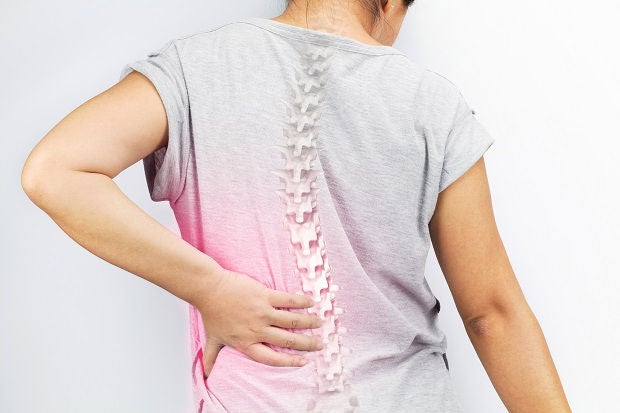SingHealth Institutions will NEVER ask you to transfer money over a call. If in doubt, call the 24/7 ScamShield helpline at 1799, or visit the ScamShield website at www.scamshield.gov.sg.

Managing scoliosis
Having scoliosis can undermine one’s quality of life as it can cause chronic back pain, particularly in more severe cases. It can also cause noticeable differences in one’s physical appearance, such as uneven hips and shoulders or prominent ribs. This can result in some children becoming selfconscious about their appearance and affect their emotional development, and more so as they move toward their teenage years.
Milder scoliosis may be controlled with less invasive or non-surgical methods, including orthoses such as a spinal brace.
In severe or late scoliosis where the spinal curve is more than 45 degrees, surgery is recommended to correct the condition and prevent it from worsening.

<<Young patients with severe
scoliosis can benefit greatly from
an improved quality of life after
surgery, said Clinical Associate
Professor Kevin Lim.>>
“When early detection or other means to correct the condition is not possible, surgery is encouraged as early as possible. After surgery, young patients can look forward to many years of developmental growth and greatly benefit from an improved quality of life,” said Clinical Associate Professor Kevin Lim, Chairman, Division of Surgery and Senior Consultant, Department of Orthopaedic Surgery, KKH.
No radiation exposure
After acquiring new technology in July 2020, KKH doctors have been able to conduct spinal fusion surgeries for scoliosis in a safer and more efficient way without the use of radiation.
In spinal fusion surgery, rods and screws are implanted in the spine to realign and fuse together the vertebrae so that they heal into one solid bone mass.
Previously, x-rays had to be taken during the surgery to guide surgeons in placing the screws and implants accurately. This exposes the patient and healthcare team in the operating theatre (OT) to radiation.
The new technology — the 7D Machine-vision Image Guided Surgery (MvIGS) system — uses visible light in place of radiation. With the system’s patented surgical light placed above the patient, built-in camera technology and light sensors are linked to computing resources in the OT to provide real-time 3D images. The system is based on technology similar to that used in self-driving cars.

KKH is the first hospital in Asia to install the MvIGS system developed by Toronto-based 7D Surgical. Within six months of using the system, 30 patients have been successfully treated.
“Like a Global Positioning System (GPS) for surgery, the MvIGS system, aided by machine vision technology with real-time positioning and guidance, helps paediatric spinal surgeons perform intricate procedures with greater accuracy and certainty,” said Prof Lim.
The technology is advantageous for spinal deformity surgery as it has the ability to quickly and accurately navigate very small, deformed, or even absent anatomy. Doing away with x-rays also elevates the safety of those involved, and eliminates the need for costly lead insulation in the OT.
Efficient surgeries
Surgery now takes a shorter time, with reduced blood loss and improved workflow productivity in the OT. Patient spinal identifier registration is a process where a patient’s scan images, taken before the operation, are matched with his or her anatomy in the OT. This takes mere seconds, unlike previously where manual imaging had to be done and can take up to 30 minutes.
Shorter surgeries translate to lower complication rates and faster postoperative recovery.
“As the placement of screws is more accurate with the new technique, it further reduces the already very low incidence of nerve and spinal cord injuries. Many patients and caregivers have also shared positive experiences from pre-surgery to recovery,” said Prof Lim.
What is scoliosis?
Scoliosis is a sideways curvature of the spine. Often characterised by an ‘S’ or ‘C’ shape, the condition may present with uneven shoulders, asymmetry of the shoulder blades and waist, and an apparent leg length discrepancy. While there is no known way to prevent scoliosis, early detection can arrest its progression. Managing a child or teenager with scoliosis depends on several factors, such as age, skeletal maturity, and severity of the condition. Visit a doctor if you notice signs of scoliosis.
Keep Healthy With
© 2025 SingHealth Group. All Rights Reserved.



















